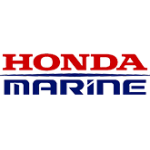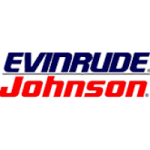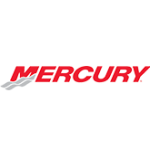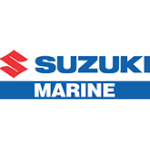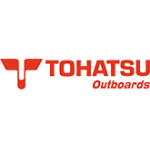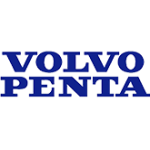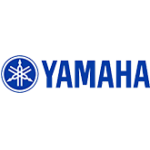FAQ - Propeller Basics
A. Blade Tip
This is the maximum reach of the blade from center of the propeller hub, where it separates the leading edge from the trailing edge.
B. Leading Edge
This is the part of the blade nearest the boat, which first cuts through the water. It extends from the hub to the tip.
C. Trailing Edge
This is the part of the blade farthest from the boat. Or the edge from which the water leaves the blade. It extends from the tip to the hub (near the diffuser ring on through-hub exhaust propellers).
D. Cup
Cup assists in increasing the water gripping capability of the propeller, particularly on boats with elevated motor heights and high trim angles. Cup can also provide additional bow lift when utilized on the rake line of the prop. Applying cup to the trailing edge of the prop along the pitch line will increase the effective pitch of the propeller. A standard cup will typically result in a decrease of 200 to 400 rpm's. This usually means a decrease in pitch of 1 to 2 inches is required to run a cupped propeller in place of an un-cupped wheel.
E. Blade Face
That side of the blade facing away from the boat, known as the positive (pressure) side of the blade.
F. Blade Back
This is the side of blade facing the boat otherwise known as the negative (suction) side of the blade.
G. Blade Root
This is the point at which the blade attaches to the hub.
G. Blade Rake
Blade Rake represents the angle of attachment of the blade to the hub of the propeller. This is not to be confused with the pitch, which is a measure of the twist or screw progression. Higher rake normally improves performance in ventilating situations (high engine elevations and high trim angles). Additionally, higher rake can provide higher bow lift, which will frequently improve speed. Low rake blades are typically used on motors with propellers running fully submerged, typically carrying moderate to heavy loads. The rake angle can either be straight or the average angle of a parabolic curve.
H. Inner Hub
This contains the Cushion Lok hub or the UHS (Universal Hub System) insert. The forward end of the inner hub is the metal surface which generally transmits the propeller thrust through the forward thrust hub to the propeller shaft and in turn, eventually to the boat.
I. Outer Hub
For through-hub exhaust propellers, this is the exterior surface is in direct contact with the water. The blades are attached to the exterior surface. Its inner surface is in contact with the exhaust passage and with the ribs which attach the outer hub to the inner hub.
J. Ribs
For through-hub exhaust propellers, this is the connections between the inner and outer hub. There are usually three ribs, occasionally two, four, or five. The ribs are usually either parallel to the propeller shaft ("straight"), or parallel to the blades ("helical").
K. Cushion Lok Shock-Absorbing Hub
Cushion Lok System: A patented, unique system which allows a propeller to be used on different drive systems, such as Yamaha, Honda, Volvo etc. This system allows super-soft forward-reverse engagement and provides maximum drive protection. Cushioning level is adjustable, and unit is field replaceable.
Safety Torque Hub System: The Cushion Lok system is designed to protect your lower unit, and when it encounters a large enough shock load it will “spin out”. Designed for E-class motors, the Safety Torque system is factory preset for a specific torque load. As the prop strikes an object, the hub releases to absorb the shock load, protecting the propeller, drive shaft, gears and gear case. Once the object is cleared, the hub automatically resets and the vessel is able to continue at full power.
L. Diffuser Ring
Aids in reducing exhaust back pressure and in preventing exhaust gas from feeding back into propeller blades
M. Exhaust Passage
For through-hub exhaust propellers, this is the hollow area between the inner hub and the outer hub through which engine exhaust gases are discharged into the water. In some stern drive installations using a through-transom exhaust system, this passage carries air.
N. Performance Porting
Performance porting allows the boater to custom tune the venting of the propeller blades for maximum planing performance. On acceleration, exhaust is drawn out of the vent hole located behind each blade. When the next propeller blade strikes this aerated water, less force is required to push through this water allowing the engine RPM to rise more rapidly. Water flows over the vent holes once the boat is on plane sending exhaust through the exhaust passage. Outboards perform better with venting and stern drives typically require less venting if any at all. Porting can be specified 3/8” or 5/16”.
O. Selecting Pitch
Identify the make, model, year and horsepower of your engine. Consult the owner’s manual to find the recommended wide-open-throttle (WOT) RPM range for your engine. If you don’t have this information, at our homepage select your motors manufacturer and check the RPM chart there.
Using the existing propeller, make a test run to determine the current WOT RPM and speed. Vary the boat’s trim angle for maximum speed. The boat should be loaded as it would under “normal” operating conditions. A full tank of fuel is recommended.
If current propeller isn’t within the manufacturers WOT range, select a propeller with a larger or smaller pitch using the following rules:
Adding 1 inch of propeller pitch will reduce WOT RPM by 150 to 200 RPM.
Subtracting 1 inch of propeller pitch will increase WOT RPM by 150 to 200 RPM
If you’re upgrading from a three-blade propeller to a four-blade propeller, remember that many four-blade propellers generally turn 100 to 200 RPM less than a three-blade propeller with the same pitch.
P. Selecting Blades
The choice between a three-four and five-blade propeller depends mostly on the desired performance characteristics of the boat. A three-blade propeller usually offers better top-speed performance in a non-surfacing piercing application, while a four or five-blade propeller provides better efficiency, acceleration and smoother cruising operation.
Most propellers are made with three blades as a compromise for vibration, convenient size, efficiency, and cost. The efficiency difference between a three and four-bladed propeller is considered less significant than the vibration difference. Most of today’s production propellers are presently either three- or four-bladed.
In recent years, with the growing frequency of propellers being run at an increased height (surface piercing), four- and five-bladed propellers have become more popular. They suppress the higher level of vibration and improve acceleration by putting more blade area into the water. They can also help to make the rake more effective in lifting the bow of the boat for added speed.
Q. Selecting Alloys
Many boats are factory-equipped with aluminum propellers. Aluminum propellers are relatively inexpensive and suitable for general purpose use. Stainless steel propellers are more expensive, but are far stronger and more durable than aluminum. A highly polished propeller is more suitable to salt water environments than a painted or satin finished propeller.
If you are looking to optimize the overall performance of your boat, upgrading to a stainless steel propeller is the most cost-effective way to get better acceleration, handling or top speed out of your boat.
Will a stainless steel propeller damage my lower unit in the event of an underwater impact? Marine engineers, conducting underwater impact testing, found no substantial difference in the amount of torque transferred to the propeller shaft between an aluminum and stainless steel propeller.
Power Tech’s patented Cushion Lok hub system is designed to give way during an underwater impact – protecting the outboard and still providing you the ability to idle home safely. This ingenious system gives you super-soft forward-reverse engagement for maximum drive train protection. This universal fitment system allows you to use the same prop housing on different motors, so your stainless purchase can be used on most drives with the purchase of the corresponding driver.

